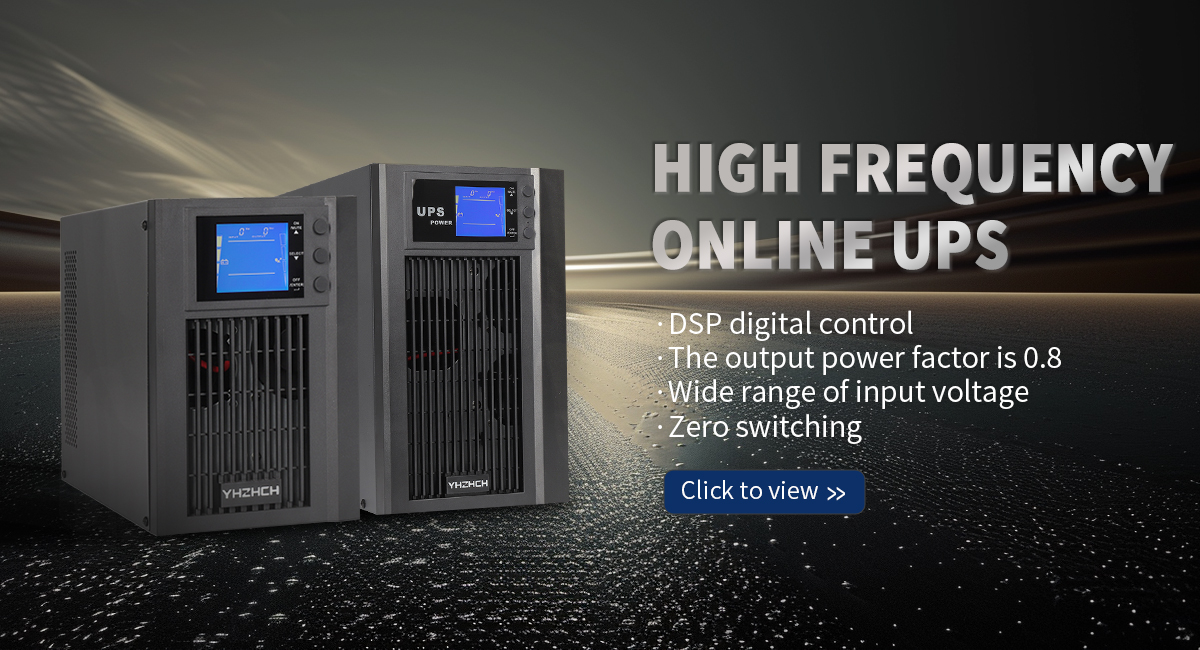
Scientifically charging and discharging UPS batteries is the key to extending their lifespan, which requires standardized execution from multiple aspects such as charging and discharging frequency, operating procedures, and parameter control. The following are detailed scientific operation methods:
1、 Core principles of charging and discharging
Avoid extreme states: Do not over discharge (battery level below 20%) or overcharge (long-term full charge float charging for more than 3 months), both of which can cause battery plate vulcanization or electrolyte loss.
Regular maintenance cycle:
Normal usage scenario (frequent fluctuations in mains power or periodic power outages): Charge and discharge once every 3 months;
Stable scenario of mains power (long-term float charging): Charge and discharge once every 6 months;
Long term idle (more than 3 months): A charge and discharge must be performed before use.
2、 The scientific process of discharge operation
1. Preparation before discharge
Confirm load priority: Disconnect non critical loads (such as lighting and regular office equipment) and only retain core devices (such as servers and data storage) to avoid excessive battery consumption due to excessive load during the discharge process.
Record initial state:
Check the battery capacity, voltage, current load power and other parameters displayed on the UPS panel (e.g. battery capacity 100%, load 300VA, rated power 1000VA);
Estimate theoretical discharge time: \ (\ text {theoretical discharge time}=\ frac {\ text {battery capacity (VA)} \ times \ text {power factor (usually 0.8)} - \ text {load power (VA)} {\ text {load power (VA)}} \ times 0.6 \ text {(safety factor)} \) (Example: 1000VA × 0.8-300VA=500VA, 500VA/300VA × 0.6 ≈ 1 hour, which means discharging to 20% of the battery capacity in about 1 hour).
2. Discharge operation steps
Disconnect the mains power input:
Find the mains input switch of the UPS (usually marked as "LINE IN"), slowly turn it off, and observe whether the UPS switches to battery mode normally (the "BATTERY" light on the panel lights up and there is no fault alarm).
Monitor the discharge process:
The battery capacity drops to 20% (the panel displays "20%" or flashes an alarm);
UPS produces abnormal noise, heat, or malfunction lights (such as the "FAULT" light on);
The voltage drop exceeds 10% of the rated value (such as a nominal 24V battery pack with a voltage below 21.6V).
Record the battery voltage, capacity percentage, and load status every 15 minutes. If any of the following situations are found, stop discharging immediately:
Discharge termination operation:
After reaching the discharge threshold (20% battery capacity), immediately restore the mains input (turn on the mains switch) to avoid deep discharge of the battery.
3、 The scientific process of charging operation
1. Check before charging
Confirm discharge completion: After the discharge is terminated, the UPS will automatically switch to charging mode. At this time, it is necessary to check whether the panel displays the "CHARGING" status. If it is not displayed, check whether the mains connection is normal.
Environmental temperature control: During charging, the ambient temperature should be maintained at 15-25 ℃. If the temperature is too low, it will cause a decrease in charging efficiency, while if it is too high, it will accelerate battery dehydration.
2. Charging process control
Constant voltage and current limiting charging stage:
During initial charging, the UPS charger will charge with a constant voltage (such as a 12V battery cell charging voltage of 14.4V) and a limited current (usually 0.1C of the battery capacity, for example: a 100Ah battery with a current limit of 10A), and this stage will continue until the current drops below 0.05C (about 6-8 hours).
Floating charging stage:
When the battery voltage reaches a fully charged state (such as a 12V battery cell voltage of 13.5V), the charger automatically switches to float charging mode, maintaining the battery level at a low voltage (13.2-13.8V) to avoid overcharging. This stage needs to last for 4-6 hours to ensure that the battery is fully saturated.
Charging completion judgment:
4、 Charge and discharge processing for special scenarios
1. The first charge and discharge of a new battery
First charging: After the installation of the new UPS, even if the battery level is displayed as full, it needs to be charged for more than 12 hours by connecting to the mains power to activate the active material on the battery plates.
First discharge: The first discharge should be carried to 30% of the battery capacity (not 20%) to avoid excessive discharge of the new battery. Charge immediately for 12 hours after discharge.
2. Activation charging and discharging after long-term idle
Idle for more than 3 months:
First, connect to the mains power and charge for 12 hours (even if the battery is depleted, UPS will automatically limit the current for charging);
Discharge with load to 30% of battery capacity, charge again for 12 hours, repeat 1-2 cycles to restore battery performance.
3. Handling of battery pack after partial replacement
If only part of the battery is replaced (not the entire set), 3 charge and discharge cycles are required to balance the voltage between the new and old batteries and avoid the new battery being dragged down by the old battery (the old battery has a high internal resistance, which can easily lead to overcharging of the new battery)
Summary: The core logic of scientific charging and discharging
The key to UPS battery charging and discharging lies in controlling the depth, standardizing the process, and monitoring parameters. Through the "regular maintenance+status evaluation" mode, it can activate battery activity and detect aging hazards in advance. It is recommended to refer to the original factory manual for UPS models (such as Huawei, APC, etc., which may have customized charging and discharging parameters), and record each charging and discharging data to form a maintenance log for long-term tracking of battery health status.


